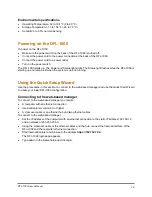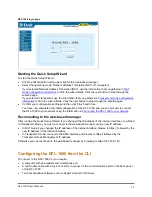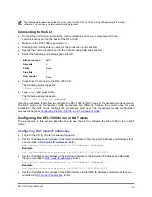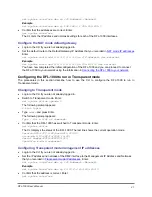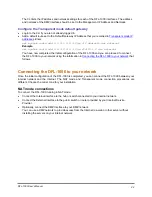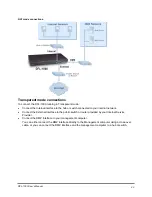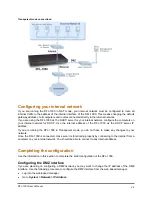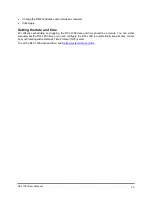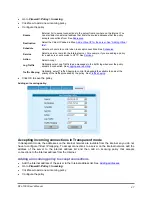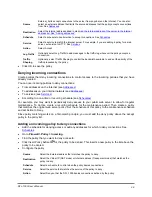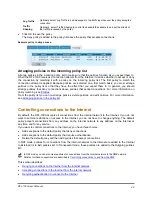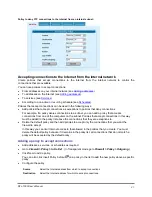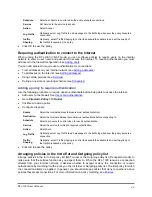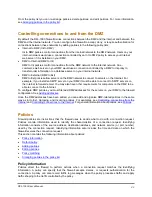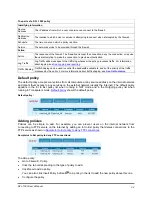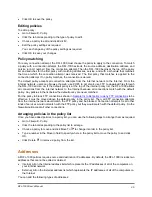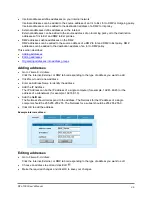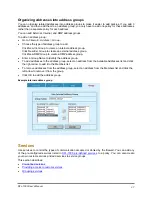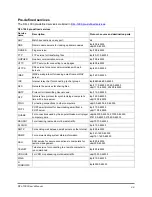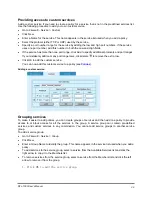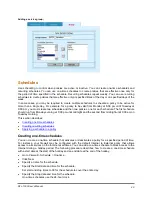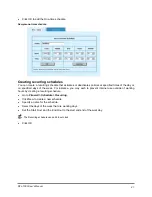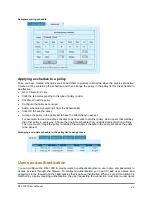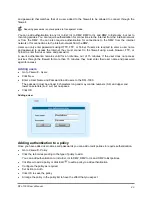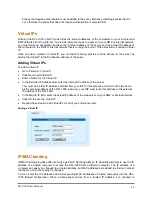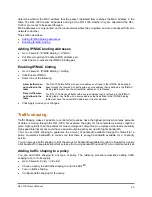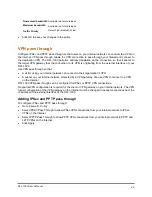
Schedule
Select a schedule to control when the policy accepts connections.
Service
Set Service to the service to accept.
Action
Select Accept.
Log Traffic
Optionally select Log Traffic to add messages to the traffic log whenever the policy accepts a
connection.
Traffic
Shaping
Optionally, select Traffic Shaping to control the bandwidth available to and set the priority of
the traffic processed by the policy.
•
Click OK to save the policy.
Requiring authentication to connect to the Internet
When running the DFL-1000 in NAT mode, you can configure policies to require users on the internal
network to enter a user name and password to access the Internet. To require authentication you must
add users to the firewall configuration, see
You can add policies to require user authentication for connections:
•
From addresses on your internal network (see
)
•
To addresses on the Internet (see
)
•
•
During a one-time or recurring schedule (see
Adding a policy to require authentication
Use the following procedure to require uses to authenticate before being able to access the internet:
•
Add users to the firewall. See
.
•
Go to
Firewall > Policy > Int to Ext
.
•
Click New to add a policy.
•
Configure the policy.
Source
Select the Internal address that users must authenticate from.
Destination
Select the Internet address that users must authenticate before connecting to.
Schedule
Select a schedule to control when to require authentication.
Service
Select the service for which to require authentication.
Action
Select Auth.
Log Traffic
Optionally select Log Traffic to add messages to the traffic log whenever the policy accepts a
connection.
Traffic
Shaping
Optionally, select Traffic Shaping to control the bandwidth available to and set the priority of
the traffic processed by the policy.
•
Click OK to save the policy.
Arranging policies in the Int to Ext and Outgoing policy list
Arrange policies in the Int to Ext policy list (NAT mode) or the Outgoing policy list (Transparent mode) to
make sure that the policies function as you expect them to. When the DFL-1000 receives a connection
attempt from your internal network, it decides whether to accept or deny the connection or require
authentication by matching it with a policy on the Int to Ext or Outgoing policy list. The first policy to match
the connection attempt is applied. In general, you should arrange policies that deny connections above
policies that accept connections. For more information on policy matching, see
.
DFL-1000 User’s Manual
32

